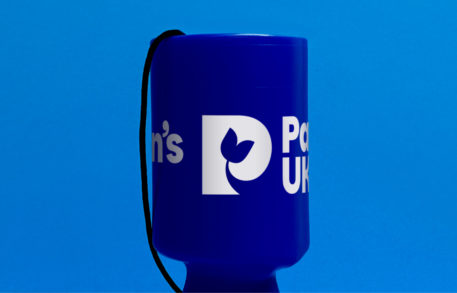
Rebranding can be daunting, especially for charities where people have an emotional connection to your brand. That’s why we asked three charities to share their tips for a successful rebrand. Kids – a charity for children with disabilities and special educational needs – and Parkinson’s UK.
We spoke to Richard Corr, Creative Lead at Red Stone, a brand agency that’s worked with several charities, including Kids and Parkinson’s UK.
Ensure you have clear branding objectives
Corr says identifying your objectives first is key because it means you can avoid changing things that aren’t necessarily going to help you reach your goal.
A rebrand can involve changing lots of aspects of your brand, from your website and logo to your tone of voice and even your charity’s name. There are many reasons why charities rebrand but increasing fundraising is one of the most common.
Tackle branding misconceptions
No matter your reason for rebranding, you need to put in place supporting elements to make it effective. For example, if increasing fundraising is your goal then you need a strategy in place for this.
“Branding is a really strong tool for an organisation when it’s done well and it can have a transformative effect, but it can’t do everything,” Corr says.
The idea that a rebrand fixes everything is a common misconception. So is the idea that it’s merely about changing visual elements like your logo. That’s because the visuals are often the most recognisable part of a brand.
Corr says: “If you only focus on how you look you risk having a disconnect…Your brand’s look needs to be backed up by the story you’re telling and the actions of your organisation.”
Claire Coussins, Director of Fundraising and engagement at Kids, says visuals are often “the tip of the iceberg” and a huge amount of work happens beforehand.
Gather evidence throughout the process
Coussins recommends reaching out to other charities who’ve rebranded and getting their tips.
She suggests following a structured process from the very start because this helps gather evidence you can take to trustees, which is particularly important for small charities.
Evidence also helps show where your money has gone and whether your rebrand has had a positive impact. It can also be useful when dealing with the emotions and subjectivity involved in a rebrand which can result in conflicting opinions.
Verity Woods, Head of Fundraising at Base 51, describes dealing with opinions that were “completely polar”. The 32-year-old charity rebranded so they can resonate better with young people in 2025 while also being able to last into the future. As they gathered opinions, they found not everyone was receptive to change.
Engage with users and colleagues
That’s why gathering a range of opinions is crucial to a successful rebrand.
Parkinson’s UK consulted over 1,000 members of their community when they rebranded. Amy Erskine, Head of Brand, Marketing and Creative at Parkinson’s UK says: “Their insights and influence were vital…Our advice is to allow time and space for that feedback to come and also to reflect and understand what’s at the heart of it.”
Speaking to internal colleagues too should be considered at the planning phase so you understand exactly whose input you need.
Communicate from the start of your rebrand
Communicating both externally and internally is pivotal to the success of a rebrand.
“Bring people along with you from the start and involve them all the way through, so there’s no surprise at the end,” Coussins says.
This transparency helps make sure your rebrand is well received. “People need to understand that change is happening and feel like their voices have been heard.” Corr says. “If an organisation suddenly completely changes overnight with no clear communication about why, it can have quite a negative connotation.”
Manage your rebrand time and budget
Doing this level of work takes time and that’s why a rebrand can’t be rushed.
No matter your time constraints, being clear about it can help you build a project that works for you. It helps you identify what really needs to change. The same goes for managing budget constraints.
A lot of the groundwork in terms of planning can usually be done in-house before engaging with an agency like Corr’s. He points out that you don’t have to do it all at once but can prioritise certain aspects like getting a strategy in place first.
This phased approach helps save money and can be more sustainable. You could change key touchpoints at launch, like your website, then change other material as stock runs out and needs replacing.
“Not doing it all at once means you don’t have huge costs up front and can carry a lot of the work out as part of your normal budget,” Erskine says.
For a small organisation like Base 51, making the most of free resources available to charities helps keep costs down. They carried out their rebrand after winning a competition being run by the Nottingham branding agency Kind who focus on working with ethical businesses.
They also got free branded materials from their local Amazon warehouse and made use of printing companies that sometimes have a charity budget.
And if you’re still feeling daunted, Coussins has one final tip: “From the outset, the mindset that you approach is really important because [rebranding] is a strategic investment for your charity.”

